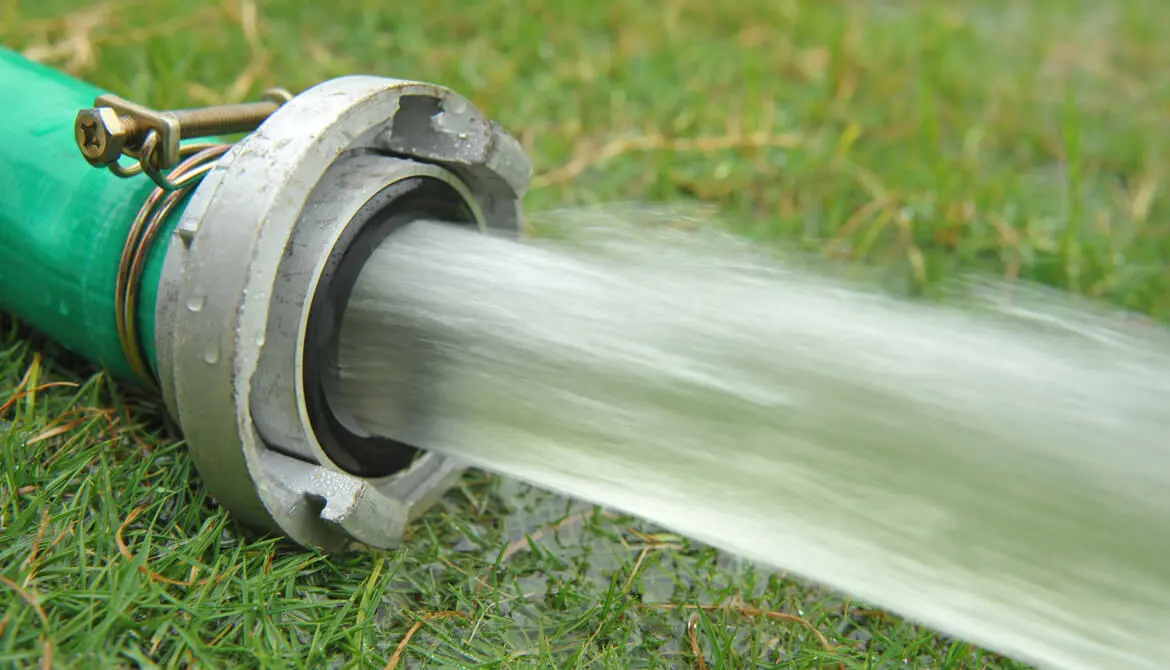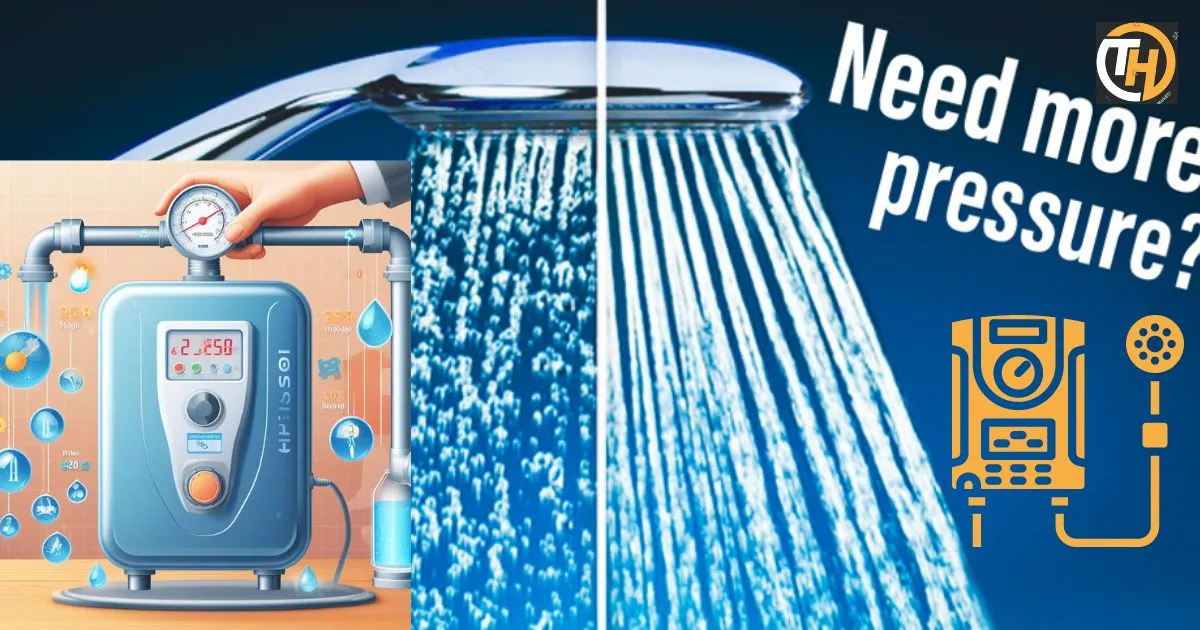In our quest for modern living, tankless water heaters have become a popular choice. They offer endless hot water and save space, but what happens when you experience low water pressure with this modern marvel? Fear not; this article will guide you on how to increase water pressure with tankless water heaters. Let’s dive in and explore how to optimize your tankless water heater for the best water pressure possible!
In this guide, we’ll explore ways to optimize and potentially increase water pressure in your home while benefiting from the efficiency of a tankless water heater. We’ll delve into common causes of reduced water pressure, the factors specific to tankless units, and practical solutions to ensure you enjoy the perfect balance of hot water and water pressure in your daily life.
Understanding the Importance of Water Pressure
Water pressure is a crucial factor in any home. It ensures your showers are refreshing, dishes are thoroughly cleaned, and appliances operate efficiently. When you notice low water pressure with your tankless water heater, it can be frustrating. But don’t worry, we’ve got you covered!
Identifying the Causes of Low Water Pressure
Before we explore solutions, let’s understand why you might be experiencing low water pressure with your tankless water heater. Several factors can contribute to this issue:
When confronted with low water pressure from your tankless water heater, it’s crucial to pinpoint the root causes before seeking solutions. Several factors may contribute to this issue:
I. Flow Rate Restrictions
Accumulation of Mineral Deposits: Over time, mineral deposits can build up within your plumbing system, including the pipes connected to your tankless water heater. This accumulation restricts water flow, resulting in reduced pressure.
Clogs or Debris: Debris, sediment, or foreign particles within the plumbing system can create blockages. These blockages disrupt the smooth flow of water and contribute to low water pressure.
II. Inadequate Sizing
The flow rate of a tankless water heater should ideally match the hot water demands of your household. If the heater’s flow rate is insufficient for your needs, it can lead to diminished water pressure.
III. Temperature Settings
The temperature settings on your tankless water heater are essential. Incorrect temperature settings can affect water pressure. Ensure that your settings align with your specific hot water requirements.
Identifying the Causes of Low Water Pressure
Experiencing low water pressure with your tankless water heater can be frustrating, but before seeking solutions, it’s essential to understand the contributing factors. Several issues can lead to diminished water pressure:
I. Flow Rate Restrictions\
Accumulation of Mineral Deposits: Over time, mineral deposits can accumulate within your plumbing system, especially in the pipes connected to your tankless water heater. These deposits hinder water flow, resulting in reduced pressure.
Clogs or Debris: Debris, sediment, or foreign particles can accumulate in the plumbing system, causing blockages. These blockages disrupt the smooth flow of water, contributing to low water pressure.
II. Inadequate Sizing
The flow rate of your tankless water heater should align with your household’s hot water demands. If the heater’s flow rate is insufficient for your needs, it can lead to reduced water pressure.
III. Temperature Settings
Temperature settings are crucial. Incorrect settings can impact water pressure. Make sure your temperature settings are suitable for your specific hot water requirements.
Now that we’ve identified the causes of low water pressure with your tankless water heater, let’s explore the steps you can take to increase water pressure:
Tips To Increase Water Pressure With Tankless Water Heater
1. Check your plumbing pipes
Low water pressure can often be attributed to your plumbing pipes. Over time, pipes can accumulate mineral deposits and debris, causing blockages. Consider having a professional inspect your pipes and, if necessary, replace or clean them to restore optimal water flow.
2. Changing the water pressure
Tankless water heaters allow you to adjust the water temperature and pressure. If you’re experiencing low water pressure, check the settings on your unit. Increasing the water pressure may solve the issue and provide a stronger flow of hot water.
3. Check the hot water taps
Sometimes, low water pressure may be isolated to specific fixtures, such as a single hot water tap. In such cases, check the tap for any blockages or mineral buildup. Cleaning or replacing the tap aerator can often improve water pressure at that particular fixture.
Causes Of Low Pressure In Tankless Water Heaters
Low pressure in a tankless water heater can have various causes:
- Mineral Buildup: Mineral deposits in the heat exchanger can restrict water flow, reducing pressure. Regular descaling can help mitigate this issue.
- Incorrect Sizing: If your tankless unit is undersized for your household’s hot water demand, it may struggle to maintain high water pressure during simultaneous hot water use.
- Pipe Issues: As mentioned earlier, clogged or damaged plumbing pipes can lead to low water pressure.
- Inlet Water Temperature: Extremely cold inlet water can reduce the unit’s flow rate and, subsequently, water pressure. Insulating the inlet pipe can help mitigate this issue.
- Gas Supply: Inadequate gas supply can prevent the tankless water heater from reaching its full capacity, impacting water pressure. Ensure your unit has the correct gas supply line.
Identifying and addressing the specific cause of low water pressure is crucial to restoring optimal performance in your tankless water heater.
Maintaining the Improved Water Pressure

After boosting your water pressure, maintenance is key to preserving the improvements. Here’s how:
I. Regular Flushing
- Continue flushing your tankless water heater periodically to prevent mineral buildup.
II. Inspect for Leaks
- Routinely check for leaks in your plumbing system and address them promptly.
Enjoy the Benefits of Improved Water Pressure
Having successfully boosted your water pressure with a tankless water heater, it’s essential to continue proper maintenance to preserve the improvements. Here’s how:
I. Regular Flushing
Consistently flush your tankless water heater as part of routine maintenance. This helps prevent mineral buildup, ensuring optimal water flow and sustained water pressure.
II. Inspect for Leaks
Make it a habit to routinely inspect your plumbing system for any leaks. Addressing potential leaks promptly not only prevents water wastage but also helps maintain the consistent water pressure you’ve achieved.
Enjoy the Benefits of Improved Water Pressure
With your enhanced water pressure, you can now enjoy several advantages:
Invigorating Showers
Experience refreshing and invigorating showers with the increased water pressure, making your daily routines more enjoyable.
Efficient Appliance Performance
Your household appliances, such as dishwashers and washing machines, will operate at their best, providing efficient and effective performance.
Reduced Wait Time
With faster hot water delivery, you’ll spend less time waiting around, making your daily tasks more time-efficient and convenient.
Myths and Facts about Tankless Water Heaters and Water Pressure
It’s time to debunk some common myths surrounding tankless water heaters and their impact on water pressure:
Myth: Tankless water heaters always result in low water pressure.
Fact: Properly sized and well-maintained tankless water heaters can indeed provide ample and satisfying water pressure.
Myth: High-flow rate tankless water heaters are always better.
Fact: The “better” choice depends on your specific hot water needs and usage patterns. Higher flow rate tankless water heaters are not always the best fit for every situation.
here’s a professional table summarizing the key points from the article “How to Increase Water Pressure with Tankless Water Heater”:
| Key Points | Description |
| Causes of Low Water Pressure | Flow rate restrictions due to mineral deposits or clogs. Inadequate sizing.Temperature setting impact. |
| Steps to Boost Water Pressure | Periodically flush the tankless water heater. Clean fixtures and check for leaks. Ensure a suitable flow rate. |
| Maintaining Improved Water Pressure | Regular flushing of the tankless water heater. Routinely inspect and address plumbing leaks. |
| Benefits of Improved Water Pressure | Enjoy invigorating showers. Enhance appliance performance. Reduced hot water wait times. |
| Myths and Facts about Tankless Water Heaters | Debunking common myths about tankless water heaters and water pressure. |
| Conclusion | A summary of the article’s key points and benefits of increased water pressure. |
This table provides a quick overview of the article’s main topics and their descriptions.
FAQs
Can I increase the water pressure in my existing tankless water heater?
Answer: Yes, by following the steps outlined in the article.
How often should I flush my tankless water heater?
Answer: Periodically flushing every 6-12 months is recommended.
Can low water pressure be solely due to temperature settings?
Answer: Incorrect temperature settings can affect water pressure, but other factors should be considered.
Do tankless water heaters always provide higher water pressure?
Answer: The effectiveness depends on proper sizing and maintenance.
Can I enjoy improved water pressure in my showers without replacing my water heater?
Answer: Yes, the provided steps can enhance water pressure with your existing tankless water heater.
Conclusion
In conclusion, addressing low water pressure with your tankless water heater is entirely achievable. By identifying the causes, taking appropriate steps to boost water pressure, and maintaining your system, you can enjoy the benefits of improved water pressure. Don’t be misled by common myths; properly sized and maintained tankless water heaters can provide you with ample water pressure for your daily needs.
Enjoy invigorating showers, efficient appliance performance, and reduced wait times. Boosting water pressure is not just a possibility; it’s a reality with the right approach and knowledge. Say goodbye to lackluster showers and hello to invigorating, high-pressure experiences! Your modern lifestyle just got even better.











